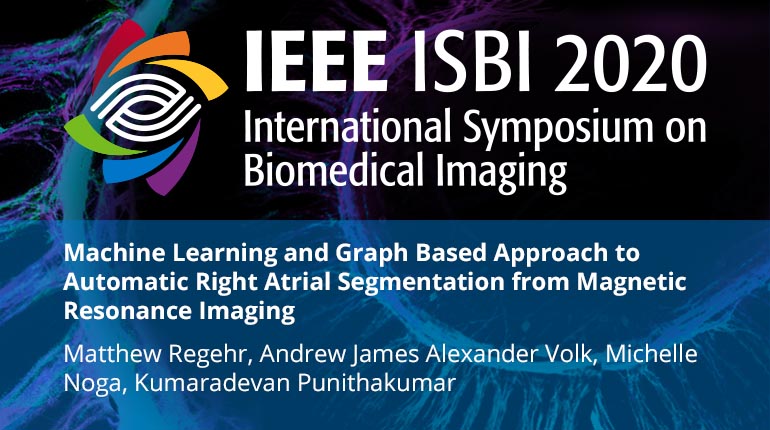
Already purchased this program?
Login to View
This video program is a part of the Premium package:
Machine Learning and Graph Based Approach to Automatic Right Atrial Segmentation from Magnetic Resonance Imaging
- IEEE MemberUS $11.00
- Society MemberUS $0.00
- IEEE Student MemberUS $11.00
- Non-IEEE MemberUS $15.00
Machine Learning and Graph Based Approach to Automatic Right Atrial Segmentation from Magnetic Resonance Imaging
Manual delineation of the right atrium throughout the cardiac cycle is tedious and time-consuming, yet promising for early detection of right heart dysfunction. In this study, we developed a fully automated approach to right atrial segmentation in 4-chamber long-axis magnetic resonance image (MRI) cine sequences by applying a U-Net based neural network approach followed by a contour reconstruction and refinement algorithm. In contrast to U-Net, the proposed approach performs segmentation using open contours. This allows for exclusion of the tricuspid valve region from the atrial segmentation, an essential aspect in the analysis of atrial wall motion. The MR images were retrospectively acquired from 242 cine sequences which were manually segmented by an expert radiologist to produce the ground truth data. The neural network was trained over 600 epochs under six different hyperparameter configurations on 202 randomly selected sequences to recognize a dilated region surrounding the right atrial contour. A graph algorithm is then applied to the binary labels predicted by the trained model to accurately reconstruct the corresponding contours. Finally, the contours are refined by combining a nonrigid registration algorithm which tracks the deformation of the heart and a Gaussian process regression. Evaluation of the proposed method on the remaining 40 MR image sequences excluding a single outlier sequence yielded promising Sorensen--Dice coefficients and Hausdorff distances of 95.2% and 4.64 mm respectively before refinement and 94.9% and 4.38 mm afterward.
Manual delineation of the right atrium throughout the cardiac cycle is tedious and time-consuming, yet promising for early detection of right heart dysfunction. In this study, we developed a fully automated approach to right atrial segmentation in 4-chamber long-axis magnetic resonance image (MRI) cine sequences by applying a U-Net based neural network approach followed by a contour reconstruction and refinement algorithm. In contrast to U-Net, the proposed approach performs segmentation using open contours. This allows for exclusion of the tricuspid valve region from the atrial segmentation, an essential aspect in the analysis of atrial wall motion. The MR images were retrospectively acquired from 242 cine sequences which were manually segmented by an expert radiologist to produce the ground truth data. The neural network was trained over 600 epochs under six different hyperparameter configurations on 202 randomly selected sequences to recognize a dilated region surrounding the right atrial contour. A graph algorithm is then applied to the binary labels predicted by the trained model to accurately reconstruct the corresponding contours. Finally, the contours are refined by combining a nonrigid registration algorithm which tracks the deformation of the heart and a Gaussian process regression. Evaluation of the proposed method on the remaining 40 MR image sequences excluding a single outlier sequence yielded promising Sorensen--Dice coefficients and Hausdorff distances of 95.2% and 4.64 mm respectively before refinement and 94.9% and 4.38 mm afterward.
 Cart
Cart Create Account
Create Account Sign In
Sign In





